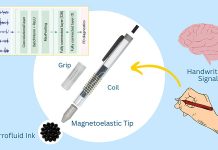
Scientists have discovered a new link between iron in the brain and Alzheimer’s disease.
Alzheimer’s is a disease that affects the brain and causes problems with memory, thinking, and behavior.
Scientists have found that iron in the brain may be one of the factors that contributes to the development of the disease.
A new imaging probe has been developed that can show that in the same areas of the brain where the amyloid beta plaques associated with Alzheimer’s occur, there is also an increase in iron redox, meaning that the iron in these areas is more reactive in the presence of oxygen.
The study was conducted by a team of scientists from The University of Texas at Austin and the University of Illinois at Urbana-Champaign and was published in Science Advances.
The researchers developed DNA-based fluorescent sensors that can detect two different forms of iron (Fe2+ and Fe3+) at the same time in cell cultures and in brain slices from mice genetically modified to mimic Alzheimer’s.
One sensor glows green for Fe2+ and the other glows red for Fe3+.
This is the first imaging technique that can simultaneously detect both forms of iron in cells and tissue while also indicating their quantity and spatial distribution.
Scientists have observed that Alzheimer’s patients tend to have elevated iron levels in the brain, but the magnetic resonance imaging method used to detect them does not differentiate between different forms of iron.
The new imaging technique developed by the researchers can show the changes of Fe2+ and Fe3+ and their ratios in each location.
It could help them better understand why there is an increased ratio of Fe3+ to Fe2+ in the location of amyloid beta plaques and whether increased iron redox is involved in forming the plaques.
The ability to visualize the changes in iron redox could also help scientists better understand whether iron redox is directly involved in cell death in Alzheimer’s or simply a byproduct.
If further research determines that iron and its redox changes indeed cause cell death in Alzheimer’s patients, that information could provide a potential new strategy for drug development.
Perhaps a drug that changes the ratio of Fe3+ to Fe2+ could help protect brain cells. The new imaging probe could be used to test how well drug candidates work at changing the ratio.
This study sheds new light on the role of iron in Alzheimer’s disease and could potentially lead to new treatments for the disease.
The new imaging technique developed by the researchers could help scientists better understand the changes in iron redox and how they contribute to the development of Alzheimer’s.
The next step for this research is to explore whether iron redox is directly involved in cell death in Alzheimer’s patients and whether drugs that change the ratio of Fe3+ to Fe2+ could be an effective treatment for the disease.
If you care about Alzheimer’s disease, please read studies about why some older people less likely to have Alzheimer’s disease, and this daily habit could help treat Alzheimer’s disease.
For more information about brain health, please see recent studies about common food that may reduce vascular disease in the brain, and results showing these antioxidants could help reduce the risk of dementia.
The study was conducted by Yuting Wu et al and published in Science Advances.
Copyright © 2023 Knowridge Science Report. All rights reserved.



